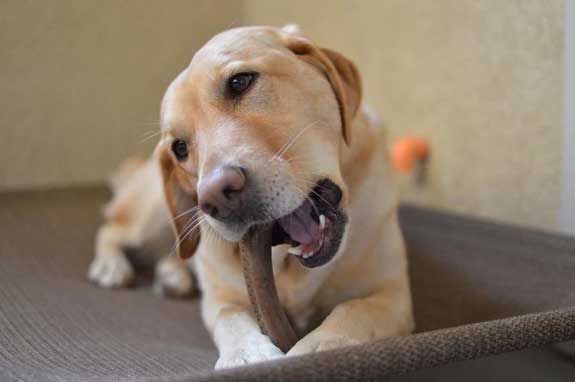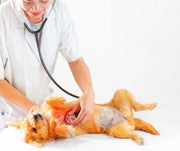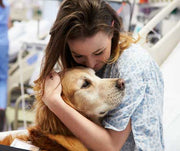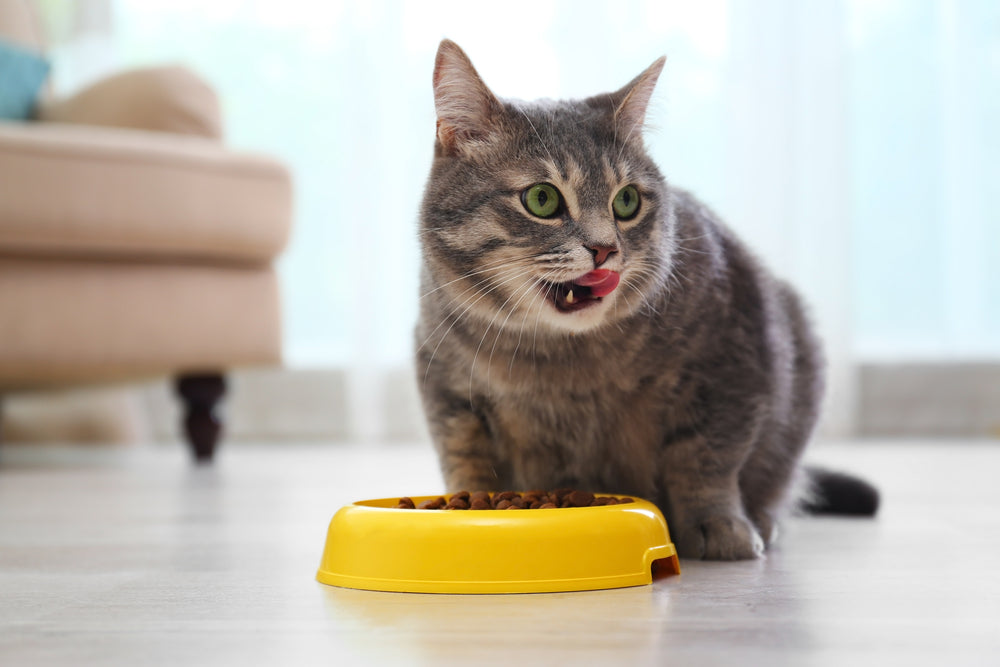5 Tips To Stop Your Dog From Begging

Most of the time, we, as pet parents, look forward to our furry little family members waiting for us at home after a hard day's work. Their wagging tails and excited demeanor often is enough for our stress to be relieved. However, some behaviors are less endearing.
Begging is a typical problem for many dogs. Perhaps you and your family are sitting at the table, gathered around for your favorite meal. Your dog picks up the scent, wanders around the table, and plops his head right on your lap, or the edge of the table. Maybe your dog whines and paws at your legs until you look in his direction. More often than not, we give in to those cute puppy eyes, and before we know it, we are unconsciously reinforcing unwanted behaviors with our dogs.
If such a practice is not properly addressed, it can lead to further complications down the road. Begging can be much more difficult to stop once the situation intensifies.
Luckily for us, there is always training and tips available for dealing with such challenges. In this feature, we are going to talk about 5 tips you may use to help stop your dog from begging. After all, everyone deserves to eat in peace.
Let's get right to it!
1. KNOW THE CAUSE
Behaviors always have their causes. While a dog cannot simply ignore its instinctual attraction to food, dogs are usually insistent on begging when the action has been poorly addressed. In this case, owners may be guilty of feeding human food right off the table whenever their dog asks for it. In doing so, your dog assumes that they can rely on that behavior whenever they want to have their share of human scraps. It's also important to realize that some human foods are harmful to our dogs and can cause belly aches or digestive issues. Read up on harmful foods here.
Sometimes, dogs do not understand the authority that you as an owner should have over them. It's important to know that it is much harder to reverse an established, uncorrected behavior than it is to proactively train your dog and help prevent begging.
This leads us to our next point.
2. KNOW THE PROPER TRAINING
Since you are most likely going to experience this unwanted behavior in your home, it's essential to know how you can maximize your home as a training ground to avoid and prevent begging.
First off, it's always a good idea to ensure that nobody feeds your dog off the table when you are eating. Everyone in the household must be consistent in this behavior. The last thing you want to do is reinforce the idea that you are going to feed your dog off the table and cater to his appetite needs whenever you are busy preparing your food.
3. IGNORANCE IS YOUR NEW BEST FRIEND
Just like the famous "Paramore" lyric, you can always rely on ignoring your pet whenever you start to see him circling the dinner table. It is also essential that you do not call or pet your dog whenever he displays unwanted behavior. Despite your intentions, negative attention can still come across as positive reinforcement to dogs. The last thing you want to do is give off mixed positive reinforcement signals whenever your dog misbehaves.
4. FIND THE PERFECT SPOT
Don't feed your dog within the kitchen or dining table areas, and if possible, try not to have your dogs around the dining space during mealtime. If your dog has free reign of the house, this step might seem a little strange to you. If that isn't a plausible solution, it might help to establish a dedicated safe space for your dog during mealtimes.
For this tip, it helps to find the right spot for your dog to stay in while you eat. It can be a place where his favorite toys are lying around, or a plush, comfortable dog bed he can relax on. You can even help keep your dog occupied with nylon dog chews. With nylon dog bones infused with steak flavorings, your dog is sure to enjoy his bone just as much as you enjoy your dinner. But only give your dog this bone during dinner time. Then when dinner is over, take the bone away. At the next mealtime, give it back to your dog. Doing this will give your dog something to look forward to and help keep him occupied while you eat.

5. BE PATIENTLY CONSISTENT
The most challenging part of this list is the ability to be consistently patient. Often, dog owners give up when the behavior is not corrected right away. It's important to remember that as a responsible pet parent, it is your job to establish authority over your dog and not the other way around. The last thing you want is to be manipulated by those sweet puppy eyes and give in every time you hear him bark affectionately.
Consistency is key, and with a little patience, you'll start reaching your goals.
THE WRAP-UP
We all love our dogs, and we would do almost anything to keep them safe, happy, and satisfied. But oftentimes, having a firm hand and establishing authority may be the difference between a toxic co-existence and a healthy relationship between you and your dog.
We hope this feature gave you an overview of how you can handle such unwanted behavior, and we hope it helps you establish a special kind of bond with your dog!
Previous article

Next article

Related posts
View all-

Wet Vs. Dry Cat Food: Which is Better?
As a caring cat owner, you always want the best for your furry friend, especially with their food. You typically have two choices: dry cat food in a bag or canned wet food. Whether you've just brought home a new kitty or are looking to transition to a new food, the decision process can be overwhelming, and understanding the impact of each on your cat's diet is essential. Read Article -

Celebrate National Pet Week: Fun Ideas to Celebrate with Your Pet
National Pet Week is right around the corner, so it's time to plan how you're going to celebrate! While we're sure you celebrate your pet all day every day... Read Article -

5 Simple Tips to Make Sure Your Cat Drinks Enough Water
Ensuring your cat stays hydrated is important, but it can be challenging since many cats don't drink enough water. Dehydration can lead to kidney disease and other health issues. Fortunately, you can encourage your cat to drink more with a few simple changes. Read Article



